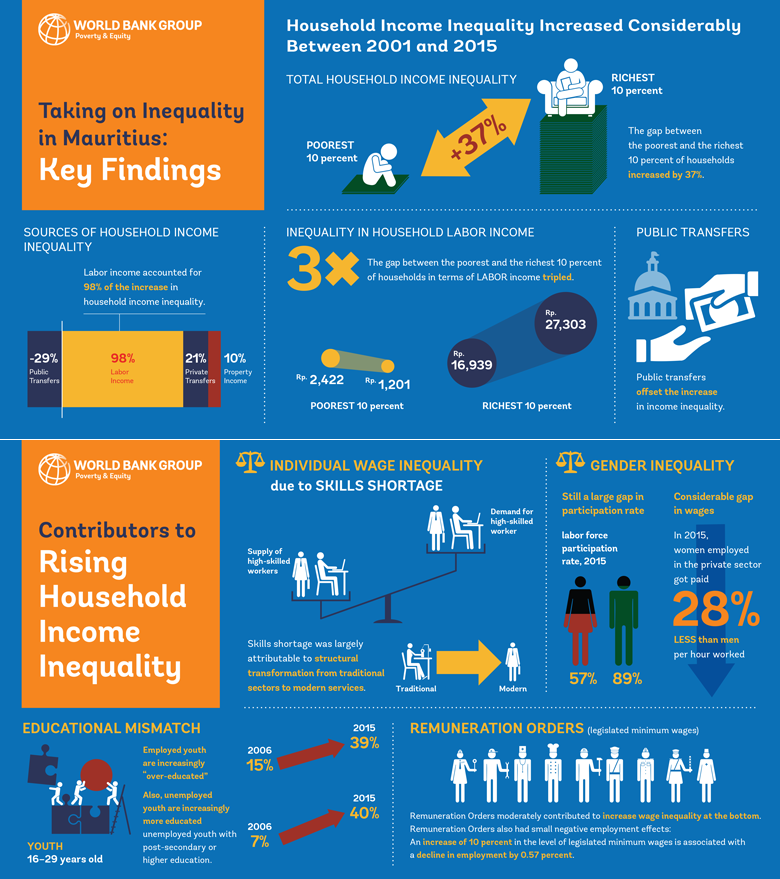Mauritius is often cited as an African success story, given the last decade was characterized by substantial economic growth. However, the same decade was also marked by limited shared prosperity and increased inequality. According to the newly released World Bank report, the gap between the incomes of the poorest and the richest 10 percent of households increased by 37 percent from 2001 to 2015.
Titled Mauritius: Addressing Inequality through More Equitable Labor Markets, the report looks into the driving forces behind the growing income inequality and identifies policy levers that could mitigate and, in the long run, possibly reverse the upward trends, consolidate recent progress, and ensure Mauritius enters a sustainable track toward high-income-country status.
While the government’s effort to redistribute the benefits of growth through the social protection system helped offset the sharp increase in inequality in household labor income, more needs to be done. The report indicates that the single most important contributor behind this trend was the inequality of individual earnings.
“The rapid growth in wage inequality can be attributed to the skills shortage created by structural changes that occurred in Mauritius over the last decade,” said Marco Ranzani, Economist, World Bank Poverty Global Practice. “The economy experienced a progressive shift from traditional and low-skills sectors to services, notably professional, real estate, and financial services. This transformation generated a considerable increase in the demand for skilled workers that was not matched by an equally rapid increase in the supply of skilled workers, notwithstanding the significant improvements in educational attainments of the Mauritian population.”
In addition to market forces, the complex system of Remuneration Orders contributed moderately to the rise in wage inequality. Remuneration Orders are directives from the National Remuneration Board that set minimum wage rates and working conditions for private sector employees.
Another finding points out that Mauritian women are still substantially disadvantaged in terms of access to the labor market. Although women’s labor force participation increased steadily over the last decade and reached 57 percent in 2015, the gender gap is still large at a staggering 32 percentage points. Additionally, women in the private sector are paid on average 30 percent less per hour than men.
Finally, in addition to the skills shortage, the Mauritian labor market is increasingly characterized by the education mismatch, particularly among youth, and by unemployment among highly educated youth. The education mismatch measures to what extent the educational level of workers does not match the educational level required in the jobs they perform.


No comments:
Post a Comment